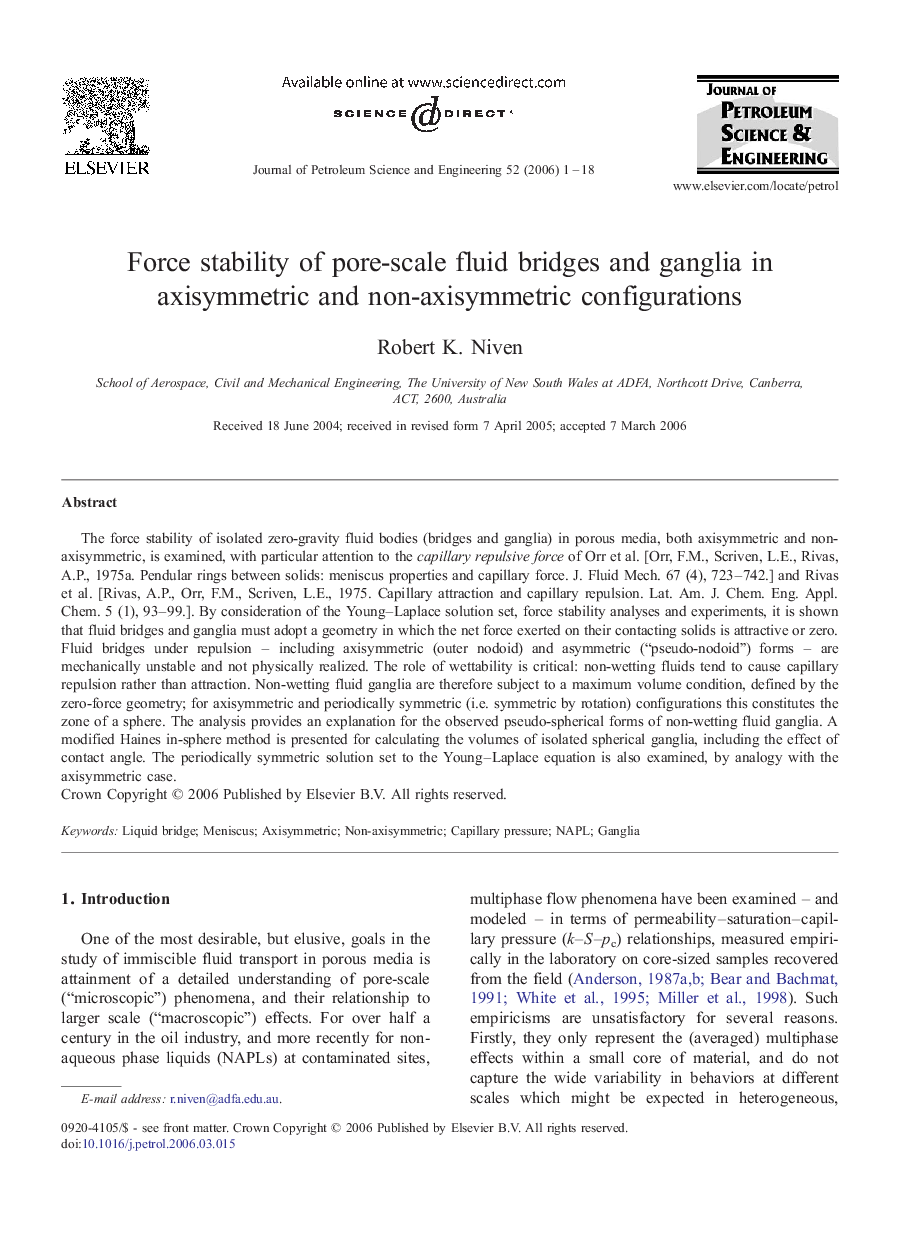| Article ID | Journal | Published Year | Pages | File Type |
|---|---|---|---|---|
| 1756458 | Journal of Petroleum Science and Engineering | 2006 | 18 Pages |
The force stability of isolated zero-gravity fluid bodies (bridges and ganglia) in porous media, both axisymmetric and non-axisymmetric, is examined, with particular attention to the capillary repulsive force of Orr et al. [Orr, F.M., Scriven, L.E., Rivas, A.P., 1975a. Pendular rings between solids: meniscus properties and capillary force. J. Fluid Mech. 67 (4), 723–742.] and Rivas et al. [Rivas, A.P., Orr, F.M., Scriven, L.E., 1975. Capillary attraction and capillary repulsion. Lat. Am. J. Chem. Eng. Appl. Chem. 5 (1), 93–99.]. By consideration of the Young–Laplace solution set, force stability analyses and experiments, it is shown that fluid bridges and ganglia must adopt a geometry in which the net force exerted on their contacting solids is attractive or zero. Fluid bridges under repulsion – including axisymmetric (outer nodoid) and asymmetric (“pseudo-nodoid”) forms – are mechanically unstable and not physically realized. The role of wettability is critical: non-wetting fluids tend to cause capillary repulsion rather than attraction. Non-wetting fluid ganglia are therefore subject to a maximum volume condition, defined by the zero-force geometry; for axisymmetric and periodically symmetric (i.e. symmetric by rotation) configurations this constitutes the zone of a sphere. The analysis provides an explanation for the observed pseudo-spherical forms of non-wetting fluid ganglia. A modified Haines in-sphere method is presented for calculating the volumes of isolated spherical ganglia, including the effect of contact angle. The periodically symmetric solution set to the Young–Laplace equation is also examined, by analogy with the axisymmetric case.
